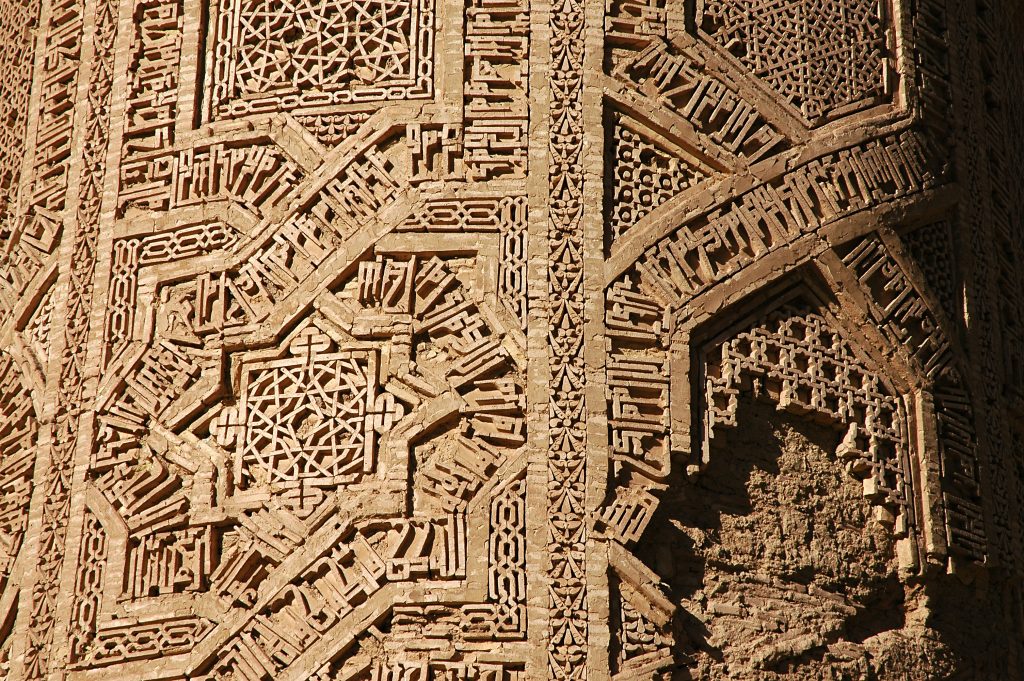The impressive minaret, built in the 12th century, is 65 meters tall and built over a rugged valley. It is the only remaining monument from the Jurid empire that ruled over Afghanistan and parts of northern India, from Kashgar to the Persian Gulf, in the 12th and 13th centuries. The minaret was built in 1194 by the Ghuri Sultan Ghiyas ad-Din (1153-1203), and its location is believed to coincide with the site of the ancient city of Firuzkoh, where the summer residence of the Ghurid emperors was located. At the time of its construction, the Minaret of Jam was the tallest brick tower in the world, and maintained that title until the 20th century when the Qutub Minar was built in Delhi by the Guri family. The Minaret of Jam is one of 60 minarets and towers built during the 11th and 13th centuries in Central Asia, Iran and Afghanistan, as a symbol of Islam’s victory over paganism.


